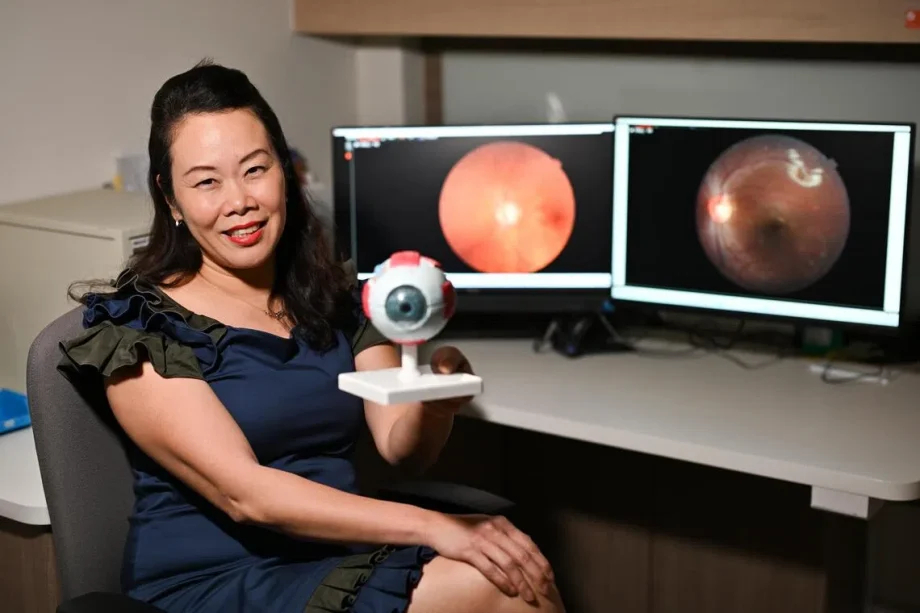SINGAPORE – At the age of 23, medical student Anna Tan travelled to eye centres in the rural south of the Philippines to service the ophthalmic microscopes used by surgeons during intricate eye procedures.
Along the way, the University of Melbourne student learnt from ophthalmologists there, and discovered more about eye care in regions such as Cebu, Davao and Mindanao.
The trip came about thanks to a scholarship by the Christian Blind Mission, a charity based in Britain that was offering students a chance to learn how to service and clean portable ophthalmic microscopes for cataract surgery.
“Hence, this trip was my inspiration and enabler for me to start my career,” said Clinical Associate Professor Tan, now deputy head of the medical retina department at the Singapore National Eye Centre (SNEC).
It was her first exposure to medical outreach work, she recalled, adding that a survey she conducted on how microscope services could be improved in these regions allowed her to publish her first ophthalmology peer-reviewed publication.
This, in turn, helped her get into the very competitive ophthalmology residency programme at SNEC.
Today, Prof Tan, 45, continues her work in medical outreach as SNEC’s director of global ophthalmology, heading the centre’s Global Eye Health efforts.
In November 2023, SNEC was recognised as a World Health Organisation (WHO) collaborating centre. This sees the centre’s global ophthalmology unit assist the WHO in providing safe and accessible ophthalmic services to the Western Pacific region, which stretches from China to the Pacific Islands, including French Polynesia and the Pitcairn Islands.
As part of its work, SNEC has provided sight-saving services to underserved communities in places such as Laos, Myanmar, Nepal and Fiji.
Over the past two years, 1,500 patients have been screened in remote areas of Laos and Myanmar, while more than 270 sight-restoring cataract operations were performed for those without access to such care in Laos and Nepal.






